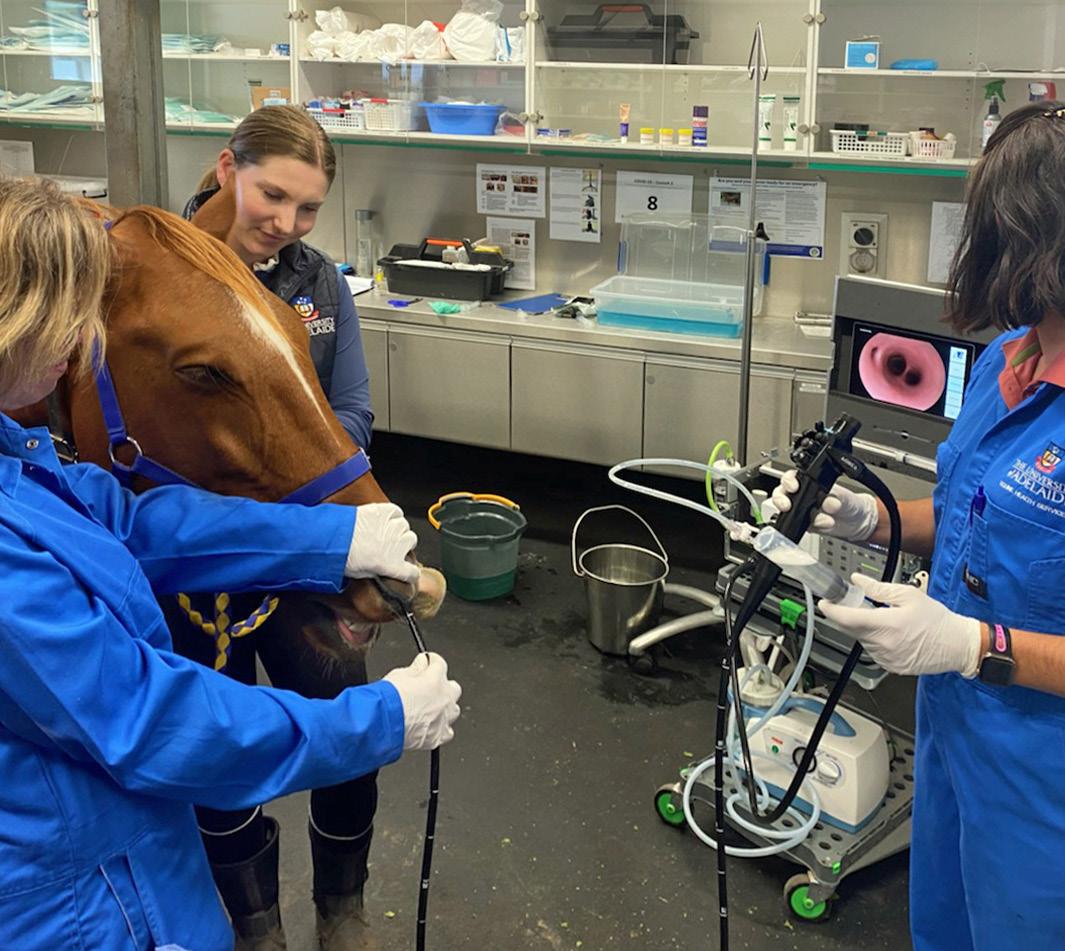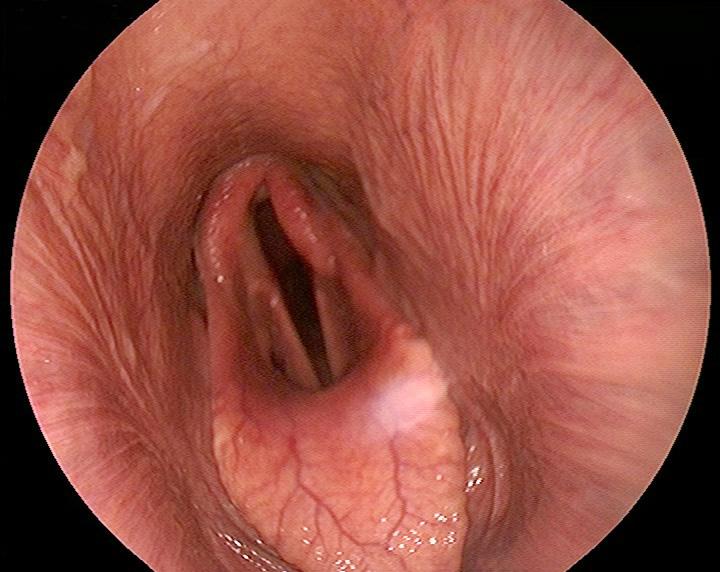
4 minute read
Feature: Noisy horses
FEATURE
Noisy horses
Respiratory noise: what’s normal, what’s not? To find out, JAMIE HOCKING spoke to Assoc. Prof. Sam Franklin from Adelaide University’s School of Animal and Veterinary Science.
JH: What causes breathing noises in horses? SF: It’s normal for horses to make some noise when they breath out. Usually this is a soft blowing sound, although some horses may ‘high blow’ – a louder, snorting sound associated with fluttering the nostrils during exhalation. Again, this is normal. Abnormal sounds most commonly occur when the horse is breathing in and result from collapse of various structures within the upper airways, which causes an obstruction to airflow. The most common form of airway collapse occurs due to paralysis of the left side of the larynx (recurrent laryngeal neuropathy), often referred to as ‘roaring’.
JH: Are noisy breathers actually struggling to breathe? SF: Horses that make abnormal noises are likely to have some form of airway collapse. However, the impact of this will depend on the degree of airway obstruction and the type of work the horse is asked to perform. Not all horses work as hard as eventers or racehorses, so are not usually as severely affected. However, excessive head and neck flexion can exacerbate airway obstruction in any sport horse, even when exercising at lower intensities.
JH: Are horses born that way? SF: This depends on the type of airway collapse that occurs. In some cases there may be a congenital problem. However, more commonly airway obstructions develop later in life. Laryngeal collapse is often progressive over time.
JH: Is one breed more likely to have issues than another? SF: Taller horses, with long necks are more likely to be afflicted with recurrent laryngeal neuropathy. This includes Thoroughbreds and draft breeds. There is also a genetic component to the condition. Other conditions don’t appear to have a genetic basis and may occur in a range of breeds.
JH: Do vets check airway structures in pre-purchase checks? SF: During a pre-purchase examination, the vet will usually listen to the horse whist it is being exercised to try and identify if there is any abnormal noise. To make a diagnosis an endoscopic examination of the airways may be recommended.
JH: Is it a big risk to buy a noisy horse? SF: Again, it really depends on the type and severity of the obstruction. Horses that are worked at lower exercise
ABOVE LEFT: Excessive head and neck flexion can exacerbate airway obstruction.
intensities may be less likely to have impaired performance so long as they can get enough oxygen for the work they are being asked to do. Having said that, we know that airway obstruction is exacerbated when the horse’s head and neck are flexed even at lower exercise intensities. This can ultimately impact a horse’s willingness to work.
JH: What if your horse starts coughing or develops a bit of noise? SF: Coughing at rest or during exercise is not normal and may indicate that your horse has equine asthma. A vet can examine the airways with an endoscope and take fluid samples from the lower airways to make a diagnosis and advise on the most appropriate treatment. Often, inhaled medications (puffers) are recommended, just as for asthma in human patients. However, it is also essential to reduce the amount of inhaled dust in the horse’s environment. Seek veterinary attention so that a definitive diagnosis can be made and an appropriate treatment plan put in place. Depending on the source of the noise, it may be possible to make some changes to airway function by altering tack, changing how the horses is ridden, performing exercises to strengthen the upper airway muscles or, in some cases, surgical interventions may be required.
JH: Are allergies in horses becoming more common and can they cause airway collapse? SF: There certainly appears to be an association between equine asthma and upper airway collapse in some cases. This is because the airway inflammation makes it harder to breathe, and pressure changes within the airways can ultimately exacerbate any upper airway collapse. Also, in horses with laryngeal dysfunction the ability to protect the lower airways is impaired and they are likely to inhale more particulate matter, leading to lower airway inflammation. In horses with severe upper airway obstruction, bleeding in the lungs may occur in some cases.

ABOVE: Performing an endoscopy. BELOW: On the left, a normal larynx. On the right a collapsed airway resulting from recurrent laryngeal neuropathy. All Images courtesy Assoc. Prof. Sam Franklin
I don’t think allergies per se are getting more common but there is probably more awareness of non-infectious lower airway diseases. Mild to moderate equine asthma is extremely common and owners don’t always recognise it as being a problem.
JH: Can airway issues be minimised through horsemanship and welfare management? SF: Equine asthma is best managed by reducing exposure to inhaled dust. It is particularly important to minimise dust levels in the feed. This can be done by feeding good quality forage. Wetting or steaming hay can also significantly reduce inhaled dust levels. Using a lowdust bedding rather than straw is also important in stabled horses and riders/ owners should remove the horse from the stable whilst mucking out.

JH: Is there a simple way to know when you need to call the vet?
SF: If your horse is making abnormal noise, coughing at rest or during exercise, or is showing signs of exercise intolerance or prolonged recovery from exercise, it is advisable to seek veterinary advice.
Jamie Hocking is an internationally successful equestrian vaulter. You can find him on Facebook at J H Vaulting or catch up with him on Instagram james.
hocking96











